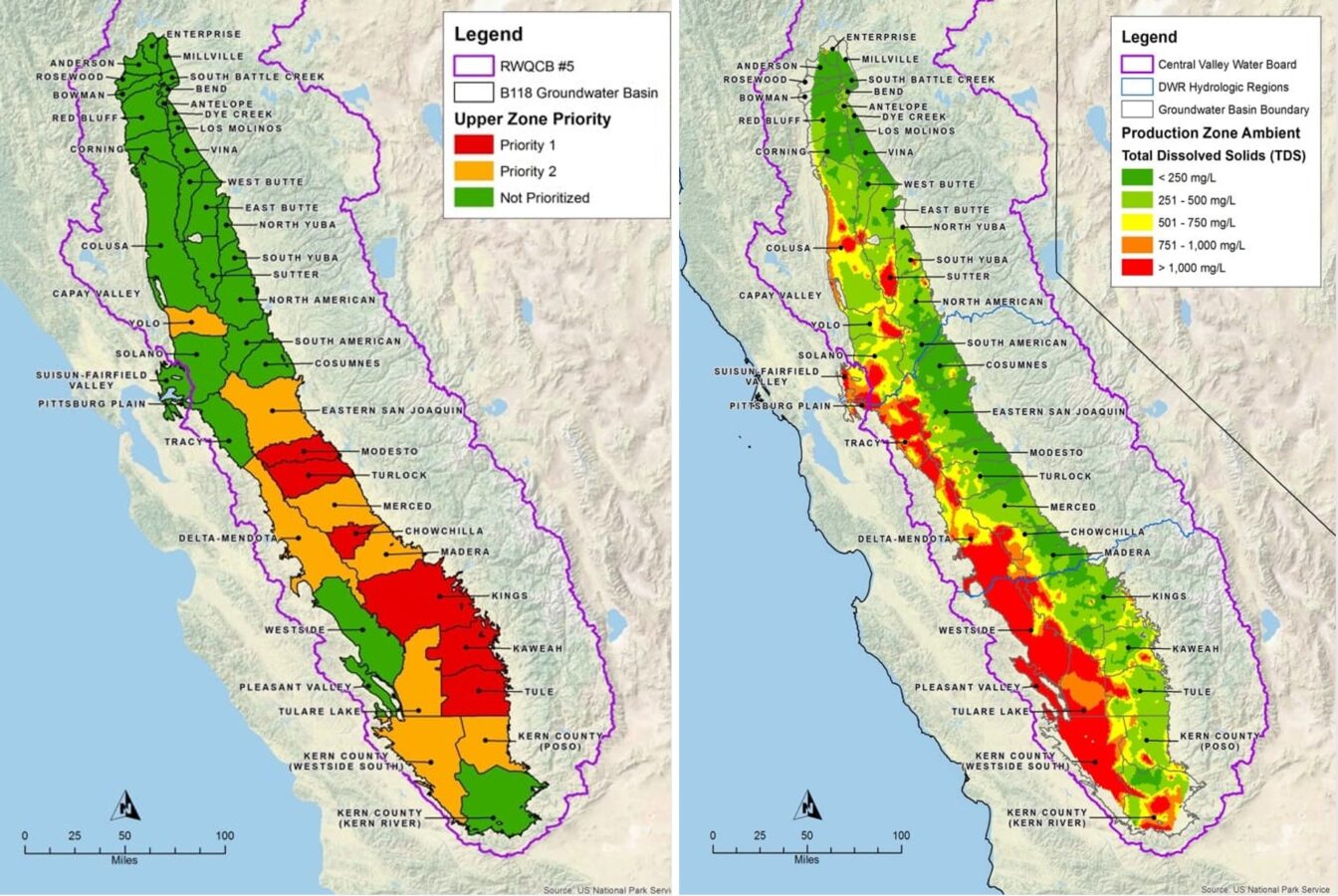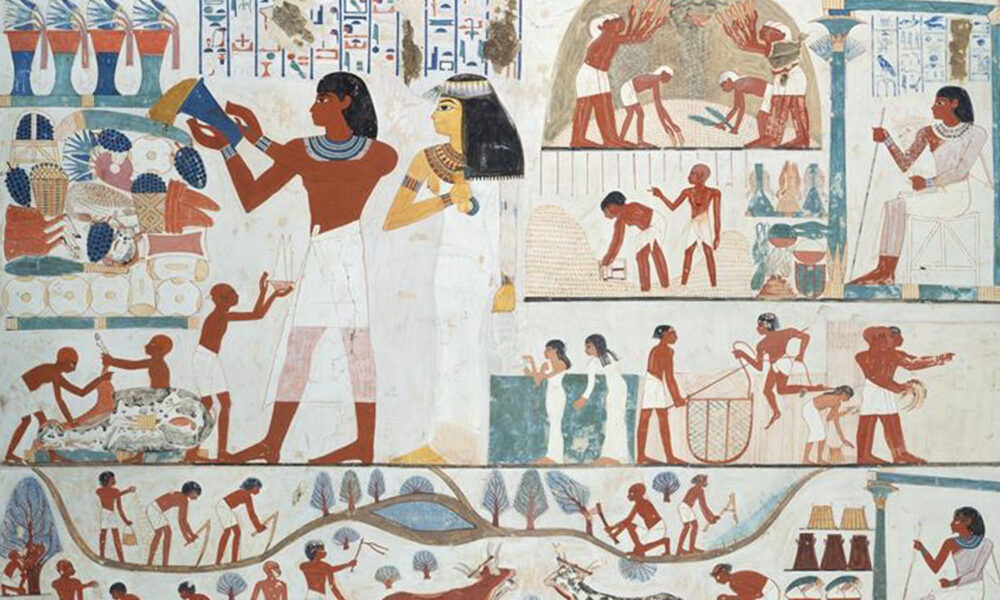When I was an agricultural engineering student, I took a class called History of Agriculture.
I loved that class, in part, because I love agriculture, but also because I love ancient history. I used to study ancient history just for fun, and when I had the opportunity to write a paper for that class, I decided to write about the origins of agriculture and civilization in Mesopotamia and Egypt.
Mesopotamia is one of the cradles of human civilization. Agriculture started there about 10,000 years ago, and about 5,500 years ago they invented the cuneiform writing system. The first documents ever written were about agricultural production!
Egypt is another fascinating civilization that started agriculture around the same time as Mesopotamia. Egypt began flourishing after the unification of the Upper and Lower Egypt with the pharaoh Menes about 5,000 years ago. They created their own written language, the hieroglyphs, and developed their agriculture well enough to feed a population of millions at their peak.
While ancient cultures are substantially different to our current reality and there is much more to say than what I write here, learning about ancient Mesopotamian and Egyptian civilizations can give us some clarity to better understand California today.
Only if we know and understand the past can we hope to avoid repeating the same mistakes our ancestors made, as well as learning from their achievements.
This is a tale about the natural resilience of the land.

A fertile land can be a fertile civilization
The swath of land between the Euphrates and Tigris Rivers in Mesopotamia was one of the most fertile lands known to humans, as was the riparian land of the Nile River in Ancient Egypt. Both regions had to grow wheat to sustain their armies and their populations of about 1.5 million citizens (around the second millennium BCE). Their rivers provided the much-needed water. Neither region received enough precipitation to irrigate its croplands, so the societies had to rely on surface water from the rivers for agriculture.
In that time, irrigation depended on the labor of enslaved people using a tool called shaduf that moved small amounts of water to higher elevations. Of course, this required massive amounts of work and the crops received only the water they needed to grow. As a result, all the water applied was taken by the plants, and the natural salts carried by the water were left in the soil near the roots.

But there was a major difference between both regions: the Nile had regular, predictable summer floodings that covered large floodplains and washed the accumulated irrigation salts away from the croplands. Those floodings “cleaned” the soil, avoiding salt accumulation in Egypt.
The water of the Euphrates and Tigris Rivers was of high quality. However, flooding was rather unpredictable and destructive in Mesopotamia, which didn’t help flush salts out of the soils; the network of irrigation canals evaporated the water concentrating the natural salts even more. After decades of using the same techniques of applying minimum water, combined with winds that carried saline dust over the area, those salts from irrigation made the soils arid and unfeasible for agriculture.
Unhealthy soil can be the end of a civilization
Not being able to grow grain because of unhealthy soils translated into not being able to feed armies. This was a significant reason why large Mesopotamian civilizations over and over again fell before relatively smaller armies of mountain tribes. Those smaller tribes would conquer the region and move the capital to another place with salt-free soils for agriculture. Then, the tribes became a new civilization, used the same irrigation techniques, and the cycle started again.
This repeated itself in Mesopotamia over multiple civilizations over millennia: Sumerians, Akkadians, Hittites, Assyrians, Babylonians….
Meanwhile in Egypt, there was a single civilization for three millennia: the Egyptians. Dynasties of pharaohs changed, but every new ruler either was or became an Egyptian, preserving their traditions, religion, and ways of life.
That was the power of the Nile: keeping the soils fertile by using the natural resilience of the land. Even with irrigation, the Nile would flood and wash away the salts and the negative anthropogenic effects of agriculture.
Preserving the natural resilience of the land made Egypt a very stable civilization for 3,000 years, from its inception until the Europeans conquered it in the 4th century BC.
Sound familiar?
When I consider California, unfortunately, it reminds me more of Mesopotamia than of Ancient Egypt. California has the “mightiest” agriculture in the world, but the cost is too steep.
The arrival of the Europeans, especially during the Gold Rush, started the destruction of the natural resilience of California.
Unsustainable agriculture in the San Joaquin Valley, which is the most profitable agricultural region in the United States by far, has caused the destruction of 95% of its original wetlands, making it an arid land rather than the once-humid region it was. That destruction also ended most of the natural resilience of the San Joaquin Valley to cope with climate extremes, including the unpredictable and destructive floods we are seeing this year.
The intense use of pesticides in the San Joaquin Valley has contributed to air pollution so much that the region is among the top three places with the worst air quality in the United States.
Excessive groundwater mining by faceless corporations has dried thousands of domestic and community wells. In addition, the soil sinks about one inch per month in some places here. That aquifer storage cannot be recovered.
Excessive fertilization has polluted aquifers with nitrates. Toxic chemicals from pesticides are in the soil polluting community aquifers, and they are almost impossible to clean. That pollution combined with the increased soil salinity created by drip irrigation with low-quality groundwater is transforming the once fertile soils of the San Joaquin Valley into a desert.

All this contributes to water insecurity and serious health threats for millions of Californians.
But maybe our main concern should be about future food and nutrition security. We are allowing our groundwater (which is our water savings account) to be depleted to grow cash crops for wealthy corporations. They only use agriculture as a source of quick money for investors in exchange for the destruction of California’s future food and nutrition security. It is sadly ironic that the wealthiest agricultural region in the United States already has one of the highest rates of food insecurity among farmworkers. And it is not because of lack of food, but because of lack of socioeconomic justice.
A call for action
We need to find the balance between keeping a reliable production of healthy and diverse food, and preserving California’s resilience to be able to grow food in the future. History has shown us how the most powerful civilizations fell because they lost the natural resilience that allowed them to feed their population because of bad agricultural practices and inadequate land use changes. But now we have the knowledge to correct those mistakes of the past.
I feel for farmworker communities and farmers who will have to retire their land from production in order to face the raw reality of California’s water supply. The question is, since the water that exists in California belongs to all Californians, how do we want it to be distributed? Do we want to give our water to corporations that use it to destroy our state? Or do we want to give it to local farmers who contribute to circular economies and care for their community?
We must repurpose about one million acres of cropland for agriculture to have water sustainability if we want California to have agriculture in the future. How we repurpose that large area (larger than the state of Rhode Island) will determine the future of California and our agriculture.
If we transition cropland used for conventional agriculture into land uses with positive side effects, the change will have an outstanding beneficial ripple effect in the health, economy, and environment of millions of Californians, as well as for small, medium, and large farmers. But if we do it wrong, allowing polluters and opportunistic corporations to take advantage of our water and our agriculture for their private gain, we may destroy California’s Central Valley.
We need healthy food and a healthy environment. Why don’t we distribute water to those who are making California a better, more sustainable place?
We will need to choose, and we should choose wisely.

